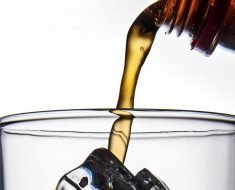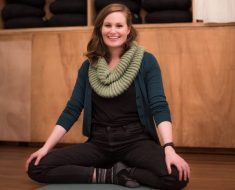In this article, we look at the causes of pimples on the breasts and how to treat them at home. We also describe when to see a doctor.
Causes

Acne occurs when the pores in the skin become clogged. Dead skin cells may become trapped in the pores, and the presence of dirt, oil, and bacteria can make acne worse.
It is common for excess oil and bacteria to become trapped in the pores on the face, but this can occur anywhere on the body, including the breasts.
Many factors can cause a buildup of oil or bacteria on the skin of the breasts. These factors include:
Genetics
Some research involving twins indicates that acne may be genetic. If a person’s parents or siblings are prone to acne, they may be more likely to develop it.
Diet
A 2015 study linked certain foods to an increased risk of acne. These foods included:
- refined carbohydrates
- milk and dairy proteins
- trans fats
- saturated fats
Stress
While stress alone cannot cause acne, it may make existing acne worse.
Some dermatologists think that stress affects the glands that produce sebum, an oily substance made from fats.
Stress may cause these glands to go into overdrive and produce more oil, which can make acne worse and lead to more pimples.
Hormonal fluctuations
Changes in hormone levels commonly contribute to acne during puberty.
Hormones can also affect the skin throughout adulthood, especially in women.
Many women find they are prone to getting pimples during or just before menstruation. Increased levels of certain hormones may be responsible.
Hormonal acne can appear as pimples on the neck, breasts, and face.
Medications
Some medications, including corticosteroids, thyroid hormones, and some antibiotics, can lead to acne.
The pimples should clear when a person stops using the medication. It is essential to speak with a doctor about alternatives and risks before discontinuing the use of medicines.
Exercise hygiene
According to the American Academy of Dermatology, poor exercise hygiene may lead to an increase in acne breakouts.
Sweat can clog pores, and the breasts tend to sweat more than some other parts of the body.
Shower promptly after exercising and change out of sweaty clothing, including bras, to prevent bacteria from becoming trapped close to the skin.
Tight or irritating clothing
Wearing clothing that is too tight or not breathable can increase a person’s risk of developing pimples.
Also, fabrics that irritate the skin can make acne worse. Scratched or broken skin is especially vulnerable.
Always wash bras and shirts regularly to prevent acne on the breasts from becoming worse.
Body lotions and creams
Some body lotions and creams can cause a person to develop pimples on their breasts.
Common culprits include:
- thick moisturizers
- scented body lotions
- certain sunscreens

Good exercise hygiene includes:
- wearing clean workout clothes
- using a clean towel to wipe sweat away during the workout session
- wiping acne-prone areas with salicylic acid pads or showering immediately after exercise
- not sharing equipment, when possible
- wiping down equipment to kill bacteria
- removing any makeup before working out
- using an oil-free sunscreen
Cutting back on dietary causes of acne
Keeping a food journal and noting the severity and location of pimples can help a person to identify dietary triggers.
A doctor may recommend reducing the consumption of dairy products and foods high in saturated fats.
Reducing stress
A range of methods can help a person to ease stress, including yoga, meditation, and journaling. Some people find that exercise also helps.
Chronic stress can lead to health problems that are more severe than acne. A therapist can help a person to find ways to reduce and manage high, prolonged levels of stress.
Wearing loose and breathable clothing
People can help to avoid or reduce the appearance of pimples on the breasts by choosing loose-fitting, breathable clothes and frequently washing bras and shirts.
Using lotions and creams that do not clog pores
People prone to acne should select products that will not clog their pores.
Look for body lotion, sunscreen, and other cosmetics that are oil-free or non-comedogenic.
Trying acne creams and ointments
Many over-the-counter (OTC) products can treat acne on the breasts and other areas.
Creams and ointments that contain salicylic acid or benzoyl peroxide can resolve existing acne and help to prevent it from returning.
Washing with a medicated body wash
Using an OTC body wash that contains salicylic acid can help to fight and prevent acne.
People prone to breakouts on their breasts may benefit from using this type of body wash regularly, including after exercise.

If OTC and home remedies do not reduce outbreaks, a person may wish to speak to a doctor. The doctor can prescribe a stronger treatment or refer the person to a dermatologist.
An individual on prescription acne medication should see a doctor immediately if they experience any of the following side effects:
- difficulty breathing
- swelling of the face or mouth
- a tight feeling in the throat
- fainting
It is also best to speak to a doctor about pimples that do not clear up with prescription medications.
In rare cases, breast cancer can cause pimples and other changes to the skin. See a doctor about patches of skin that are red or resemble an orange peel.
Takeaway
Pimples on the breast may be bothersome, but they are usually harmless. Fortunately, many home remedies and prescription medications can help to treat and prevent acne.
Anyone concerned about a lump or a pimple that does not go away should speak to a doctor or dermatologist.
Source: Read Full Article





